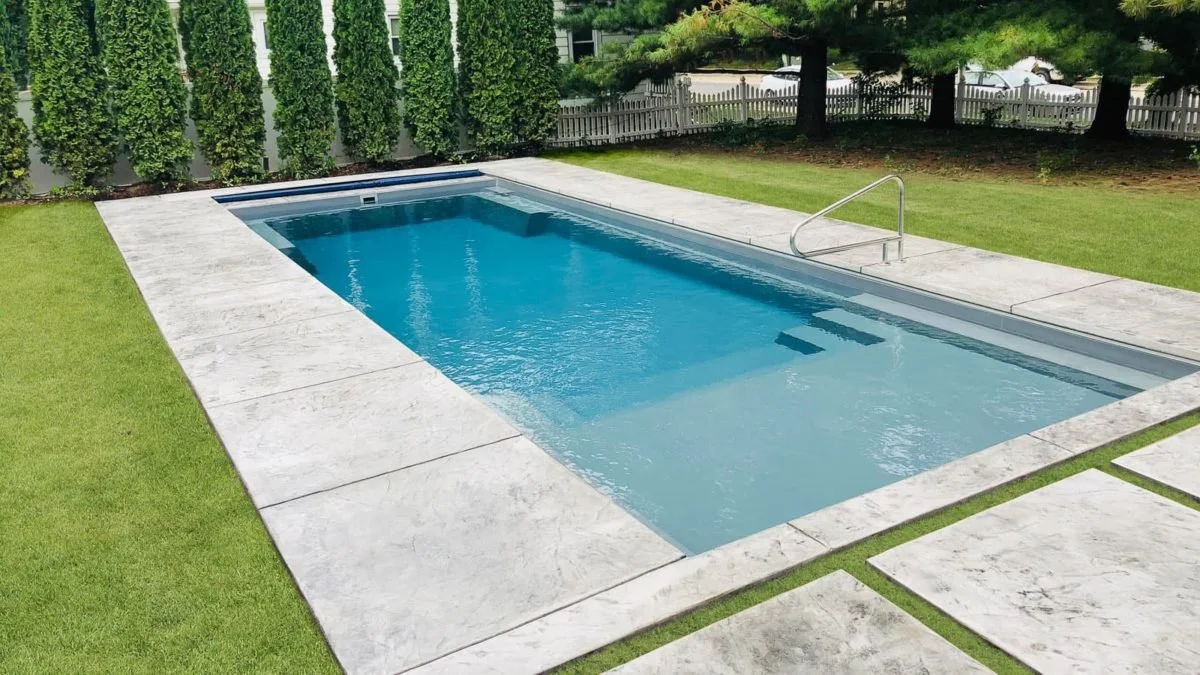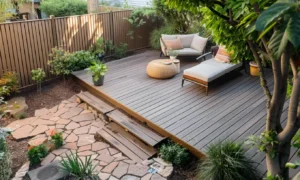Installing a fiberglass pool might look simple, but it’s a technical process that blends structural engineering, materials science, and field precision. A large shell arrives on a truck, the ground is prepared, and within days the backyard starts to transform. What many don’t see is the coordination behind every slope, base layer, and pipe fitting.
Each step is driven by engineering accuracy. The fiberglass shell must sit perfectly level, the soil underneath needs stable compaction, and the plumbing must flow at calculated rates. Local soil and weather conditions in places like Dayton make that even more important. A qualified swimming pool company in Dayton Ohio understands how regional soil composition and winter freeze cycles affect long term stability. Behind the smooth water surface is a structure that only performs well because of those technical details.
The Anatomy of a Fiberglass Pool
A fiberglass pool starts in a controlled factory environment, not a backyard. The shell is molded as one continuous unit using layers of fiberglass and resin, along with core materials for stiffness. Engineers design every contour using CAD software, which allows exact replication of the same shape with millimeter-level accuracy.
Each shell is made from several composite layers.
- The gelcoat provides a smooth, UV-resistant surface.
- Beneath it, layers of fiberglass mat and polyester resin create the structural backbone.
- A vinyl ester barrier coat stops water penetration and blistering.
- Some models include a core layer, often foam or honeycomb, to make the pool rigid without unnecessary weight.
This design lets fiberglass pools flex slightly with soil movement while staying strong under thousands of gallons of water. The technology behind these shells evolved from aerospace and marine composites are industries where strength and lightness are critical.
Engineering for Local Conditions
Ohio’s geology and climate bring unique challenges to backyard pool installations. The Dayton region is known for its clay based soils, which expand and contract with seasonal moisture. During winter, freeze thaw cycles can push on underground structures, including pools.
That’s why a swimming pool company in Dayton Ohio performs detailed site evaluations before digging begins. They use laser leveling and soil probes to study the grade, drainage, and compaction levels. Clay heavy areas often need additional gravel base layers or drainage channels to reduce hydrostatic pressure under the pool.
This step might not seem technical from the outside, but it’s what determines whether a pool stays stable through years of seasonal shifts. Without the right preparation, small soil movements can cause a fiberglass shell to settle unevenly or twist slightly.
The Role of Precision Tools
Fiberglass pool installation depends on tools that were once limited to construction and surveying. Laser transits and digital inclinometers ensure every corner of the excavation is level. In larger projects, installers even use total station instruments that calculate horizontal and vertical coordinates using infrared beams.
This precision matters. If one side of the hole is just an inch lower than the other, the filled pool could appear off level, and pressure on the fiberglass shell would distribute unevenly. Over time, that leads to hairline cracks or plumbing strain.
Transport and Handling
Getting the pool shell from the factory to the site is a project of its own. These shells can be 30 or more feet long, so transportation requires careful planning and sometimes even escort vehicles on highways.
Each unit is lifted by a crane or boom truck using molded lift points. The fiberglass can flex slightly, but too much movement during lifting could deform the shape. Installers recheck every angle once the shell arrives, ensuring that shipping didn’t cause any warping.
Once the shell is inspected, the excavation is finalized and graded with crushed stone. This material interlocks and drains well, making it ideal for Dayton’s moisture prone soils.
The Excavation and Setting Process
The excavation follows the digital model of the pool shell. Builders often reference a 3D CAD profile of the specific pool model to match the depth and shape precisely. In Ohio’s colder regions, depth planning also considers frost line limits and drainage needs.
As the crane lowers the fiberglass shell into the excavation, installers make small adjustments using levels and lasers. The tolerance is tight within half an inch across the full span. Once the shell is set, it’s partially filled with water to stabilize pressure, then backfilled in layers with gravel or flowable fill to support the sides.
Balancing these pressures is critical. Filling the pool too quickly or backfilling too heavily on one side can distort the structure. Skilled installers monitor both in real time, keeping water and backfill height even.
Plumbing Design and Hydraulic Flow
Behind every clean pool surface is a carefully designed plumbing system. Hydraulic design starts with calculations of pipe diameter, water velocity, and pump performance. Engineers simulate flow paths to ensure the water moves efficiently through skimmers, drains, and return jets.
Modern variable speed pumps allow fine control of circulation, reducing energy consumption. Many systems now include smart controllers that connect through Wi-Fi, giving homeowners and technicians real time data on flow rates, pressure, and temperature.
Installers also focus on hydraulic balance. The suction and return sides of the system must be matched so that pressure remains even, protecting pumps and filters from strain. All electrical components are bonded and grounded per the National Electrical Code to prevent stray voltage.
Pool companies in Dayton often adjust these systems to local power standards and weather patterns, ensuring freeze protection features are installed for cold months.
Managing Structural Forces
A fiberglass pool faces pressure in both directions, both outward from the water inside and inward from the soil surrounding it. That balance shifts during rainfall, freezing, or groundwater changes.
To protect against upward pressure, many pools include a hydrostatic relief valve in the main drain. This small mechanism allows water beneath the pool to escape into the pool basin if groundwater builds up. Without it, the shell could lift slightly when empty or during heavy rain.
The backfill around the pool is layered carefully to distribute soil pressure evenly. In wetter parts of Ohio, some installers use a flowable backfill mix that hardens slightly while still allowing drainage. This stabilizes the shell without trapping moisture.
The Bond Beam and Deck Connection
Once the shell and plumbing are secure, a concrete bond beam is poured around the pool’s upper edge. This beam ties the fiberglass structure to the surrounding decking and acts as reinforcement against shifting loads.
Expansion joints are added between the concrete and the fiberglass to allow slight movement as temperatures fluctuate. Without these gaps, Dayton’s freeze then thaw cycles could create cracks or uneven coping.
Quality Control Through Technology
Technology has raised the quality standard for fiberglass pool installation. Laser guided levels, digital moisture meters, and smart pressure gauges all help installers verify accuracy during each step.
Manufacturers collect field data from these installations to improve design and resin formulas. This feedback loop has made today’s fiberglass pools stronger, lighter, and more resistant to environmental stress. Some companies are also exploring embedded sensors that monitor movement and strain within the pool shell, similar to systems used in bridge monitoring. While still new, this could allow real time diagnostics on pool performance and structural health.
Where Engineering Meets Everyday Living
The appeal of a fiberglass pool isn’t only about low maintenance or quick installation. It’s also about precision. Behind the smooth surface and calm water is a system that was planned, measured, and calibrated down to fractions of an inch.
Each detail from drainage base layers to hydraulic balancing represents the work of engineers and field technicians who understand how materials behave under pressure. The result is a structure that quietly endures seasonal cycles, soil shifts, and daily use for decades.



































